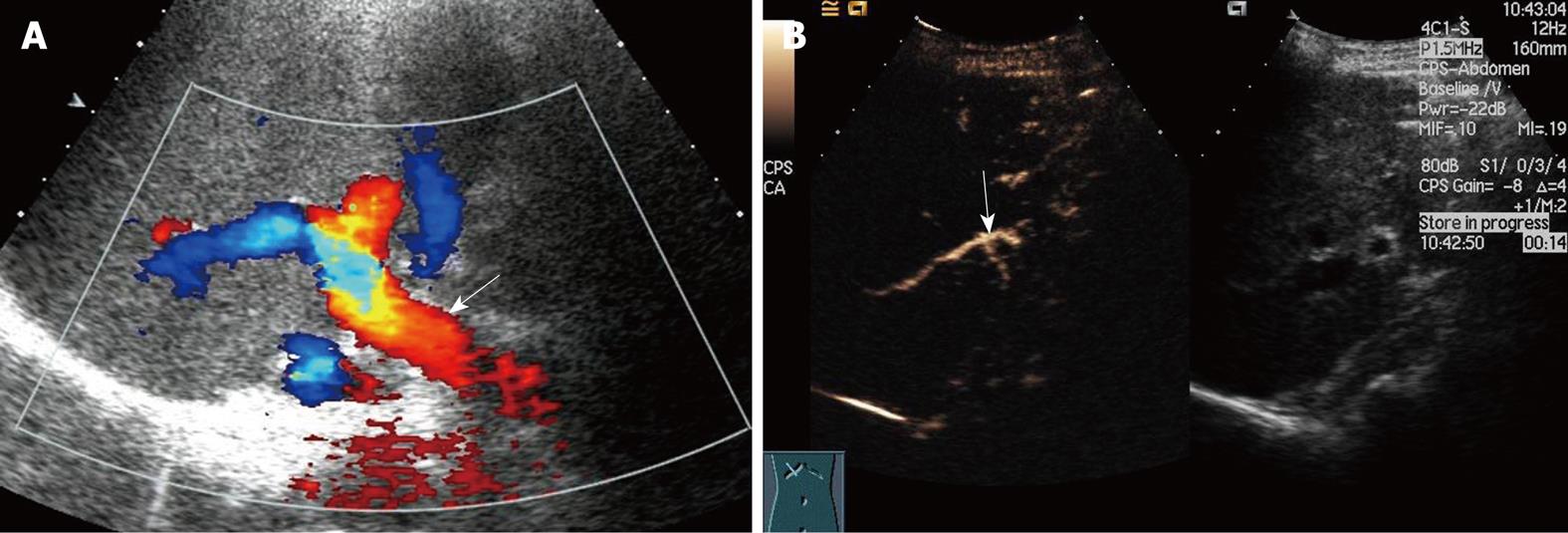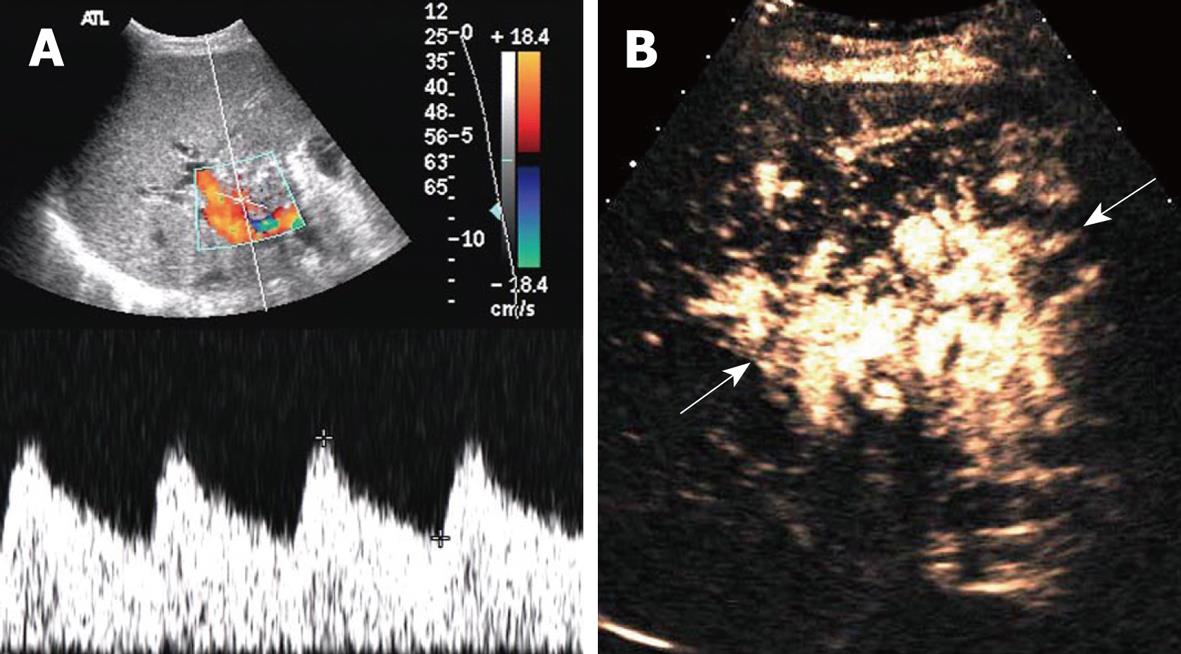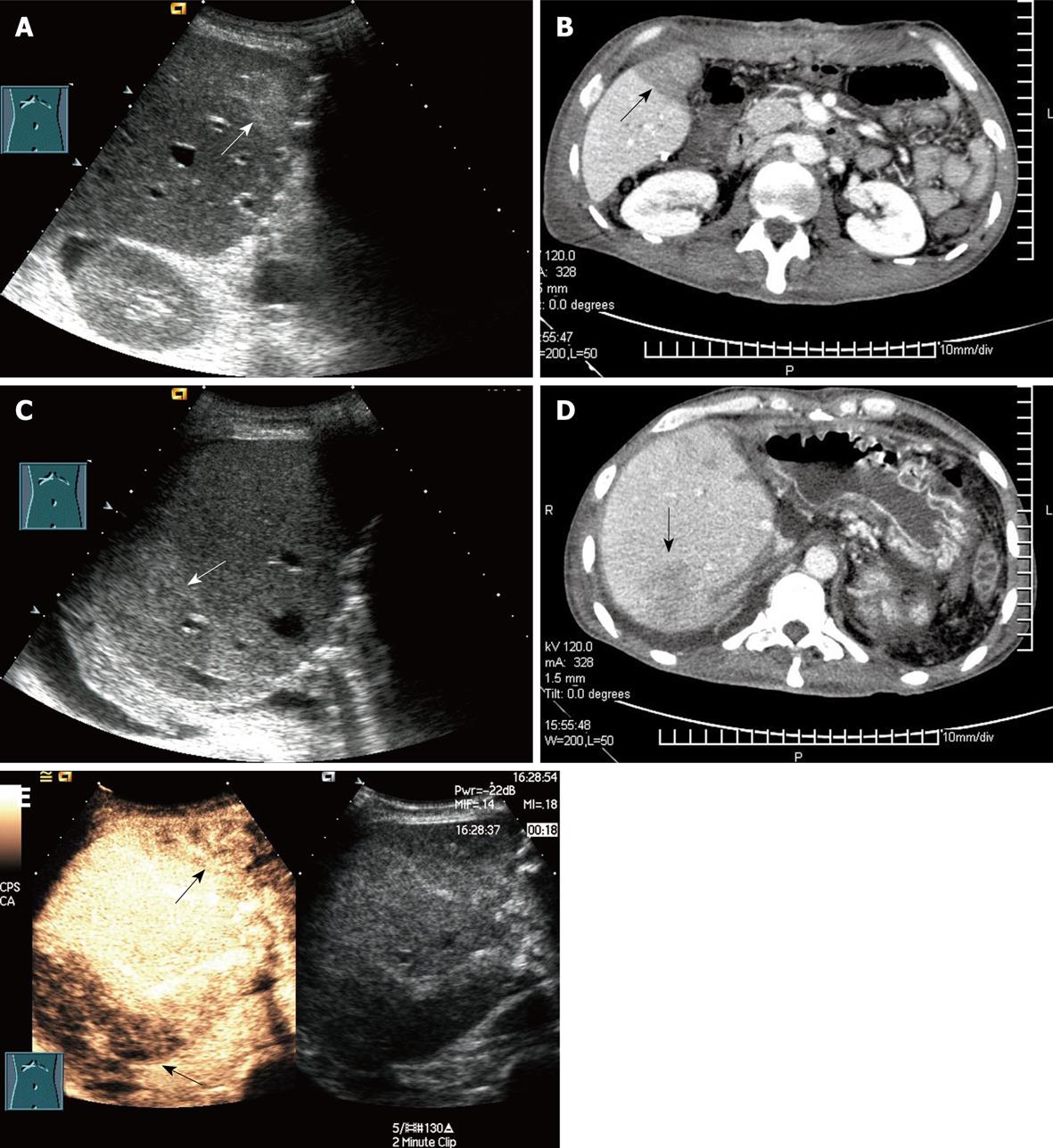Copyright
©2009 The WJG Press and Baishideng.
World J Gastroenterol. Aug 7, 2009; 15(29): 3670-3675
Published online Aug 7, 2009. doi: 10.3748/wjg.15.3670
Published online Aug 7, 2009. doi: 10.3748/wjg.15.3670
Figure 1 Slender hepatic artery in 54-year-old woman who received right-lobe living donor liver transplantation (RLDLT).
A: Longitudinal oblique Doppler Ultrasound (US) scan 2 mo after RLDLT did not reveal the right hepatic artery beyond the level of the right portal vein (arrow); B: Longitudinal oblique contrast-enhanced ultrasound (CEUS) scan obtained followed the Doppler scan. The right hepatic artery (arrow) was seen clearly 14 s after contrast material injection, but it was small.
Figure 2 HAT in a 35-year-old man who underwent RLDLT.
A: Longitudinal oblique Doppler US scan 1 d after RLDLT did not reveal the right hepatic artery beyond the level of the right portal vein (arrow); B: Longitudinal oblique CEUS scan obtained following the Doppler scan. The right hepatic artery was still not seen after contrast material injection, but the right portal vein was demonstrated clearly (arrow). A complete unenhanced area indicates a lack of perfusion of the liver parenchyma in the anterior right lobe; C: Selective angiogram obtained after celiac artery injection confirmed complete thrombosis of the right artery at the level of the anastomosis (arrow).
Figure 3 Hepatic artery obstruction with collateral circulation in a 36-year-old man who underwent RLDLT.
A: Longitudinal oblique Doppler US scan 6 mo after RLDLT revealed a tardus-parvus spectrum at the porta hepatis; B: Longitudinal oblique CEUS scan obtained following the Doppler scan. A reticulate vessel instead of the right hepatic artery trunk was seen (arrows) at the porta hepatis after ultrasound agent injection.
Figure 4 Regional congestion in a 35-year-old man who underwent RLDLT.
A: Longitudinal oblique 2D US scan 1 d after RLDLT revealed regional echogenicity in segment V; B: Contrast-enhanced CT showed poor perfusion (arrow) in segment V 2 d after ultrasound examination; C: Longitudinal oblique 2D US scan revealed regional echogenicity in segment VII; D: Contrast-enhanced CT showed poor perfusion (arrow) in segment VII; E: Longitudinal oblique CEUS scan obtained following the Doppler scan. At CEUS, the poor perfusion area (arrows) was seen as an inhomogenous echo that corresponded to segment V and segment VII. This patient remained asymptomatic and formed collaterals between the tributary of the middle hepatic vein and the right hepatic vein at Doppler ultrasound follow-up.
- Citation: Luo Y, Fan YT, Lu Q, Li B, Wen TF, Zhang ZW. CEUS: A new imaging approach for postoperative vascular complications after right-lobe LDLT. World J Gastroenterol 2009; 15(29): 3670-3675
- URL: https://www.wjgnet.com/1007-9327/full/v15/i29/3670.htm
- DOI: https://dx.doi.org/10.3748/wjg.15.3670












